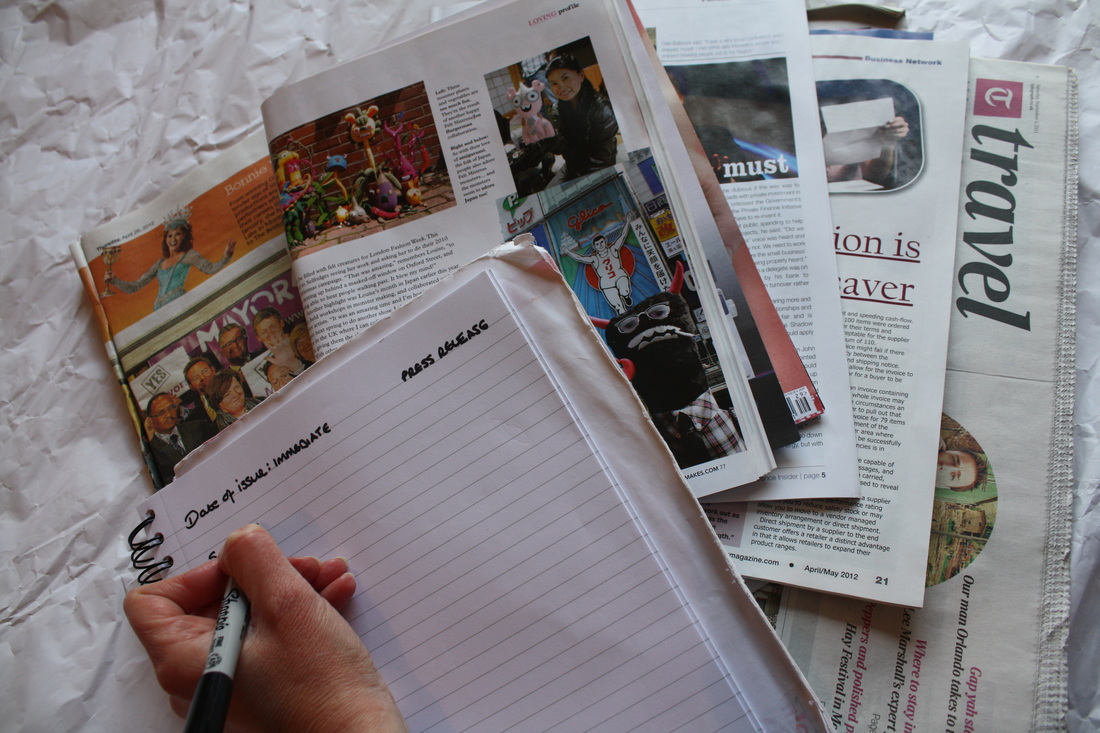Many small business owners want to get media coverage to help raise the profile of their business. Arguably, this is a great idea. There's the potential for 1000's of people to hear, read or see more about what your business does and how it could benefit them.
However, getting the media to actually put information about your business in the paper, online, or on the radio or tv can be a tough job. The Business Greenhouse has spoken to many business owners who have put in time and effort to try and make this happen, but failed to get any coverage.
Our experience of writing news releases shows that to be successful you have to get your target media interested enough in what you have to say (covered in Part 1 of our PR mini-series). You also have to know how to tell the media your story, and for this a news release can help enormously.
If you can structure a news release properly, you should have a good chance to 'sell' your story to your target media - essentially tell them why they should cover it. Here's our guide to structuring your news release:
This is your first chance to grab someone’s attention, so do spend time thinking about it and trying out a few different options. Get straight to the point and use your news release title to tell the journalist exactly what your release is about and why it is newsworthy. Quirky is fine, but remember you still have to obviously show why your story is worth covering. Be as concise as possible!
So 'Local woman wins 'best supplier' in national Awards' is a good headline if you're targeting your local media. 'Black tie Awards ceremony held in town centre hotel' is not.
First paragraph
Who, what, why, when, where and how – reveal all in your first paragraph, but leave the detail until later in the release. Ideally, as an introduction to your release this is just one sentence. Be aware that your release is likely to be read quickly and will be competing with others for attention so craft this first sentence carefully!
Second paragraph
Flesh out the detail. Give the journalists more information about what is newsworthy about your story, based on what you've said in your first paragraph. Be factual rather than emotional, and use the third person (write ‘she’ or ‘he’, or use your name, rather than say ‘I’).
Write another paragraph or two if needed, but try to keep your release to the point. If you were to print your finished release on a piece of paper, you’d want it to be no longer than one side of A4.
Quote
This can make all the difference to your news release. Quotes are your opportunity to give a more personal view of your story and bring your release alive. Attribute the quote to the most suitable person.
If you won a ‘best supplier’ award for example, you could quote yourself saying what it means to your business to win and how it shows what an excellent product you have. You could also seek a quote from the award givers – perhaps they have something to say about how your nomination stood out from the crowd.
Conclusion
Make sure you tell the readers and listeners – your ultimate audience – what you want them to do next. This call to action says where can they get more information, or where and when they can go to your event and any deadlines by when they must do this etc. It's an essential part of the release as you want to make it as easy as possible for the readers and listeners to convert to being your customers.
Write ‘ENDS’ at the end of your story.
Then add your name, company name, and your contact details so that the journalist can get in touch with you if they need more information. Putting them after the ‘ENDS’ heading means they shouldn’t be printed or broadcast – good to know if it’s your personal mobile number you’re giving and you’d rather your customers didn’t phone you on that!
Notes for Editors
You can include further details here if there’s background information you feel would help the journalist write their article.
Photos
Including a photo, or a video, can increase interest in your story – both from the journalist and your audience. Consider carefully what photo to send and make sure it reflects your story. The ‘best supplier’ winner for example might have a photo of them receiving the award from an industry expert, or a video of the award givers explaining why they won.
If you don’t have an image to send, is there an opportunity for the media to take one themselves, or get an interview in person? If so, invite the media to a ‘photocall’ when you issue the news release. We’ll cover what makes a good photocall in another post.
Hopefully you'll find these notes, and others in our PR-related blog posts, useful when it comes to writing your own news releases. Do let us know how you get on.
If you're in the process of writing your own news release, and would like someone to review it and make any suggestions about how you could improve it, please do get in touch. As well as writing and distributing news releases for our clients, The Business Greenhouse's very own Media Officer will be pleased to help those who have already made a start on writing their own. Rates start from £15 for Startups and young businesses. Send your news release to [email protected] and we'll get back to you with a quote.

 RSS Feed
RSS Feed